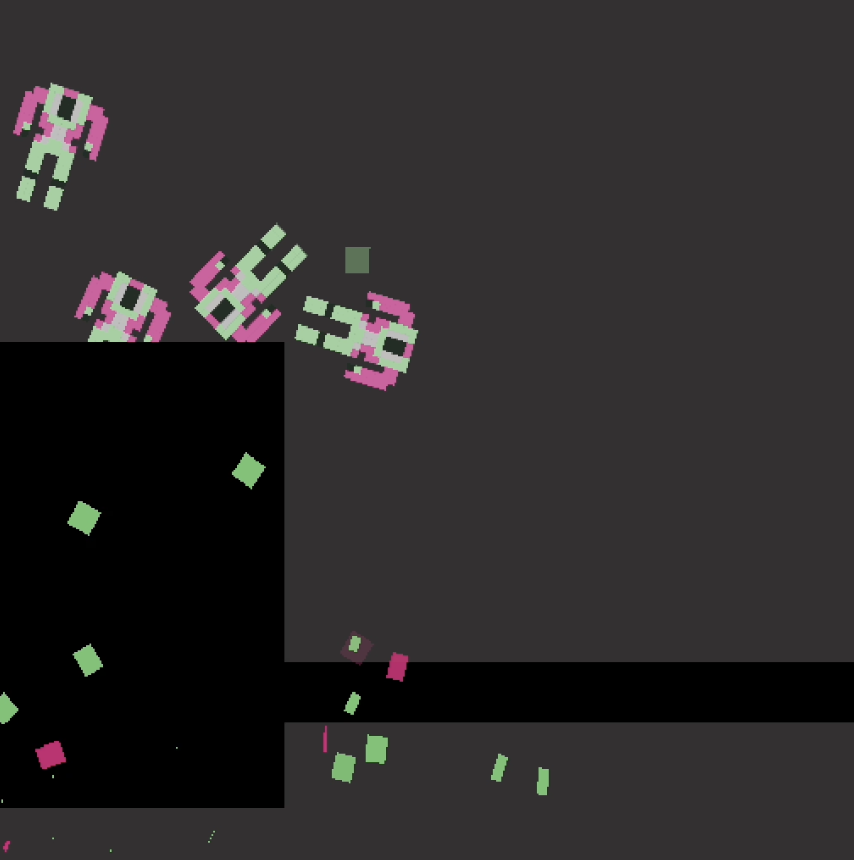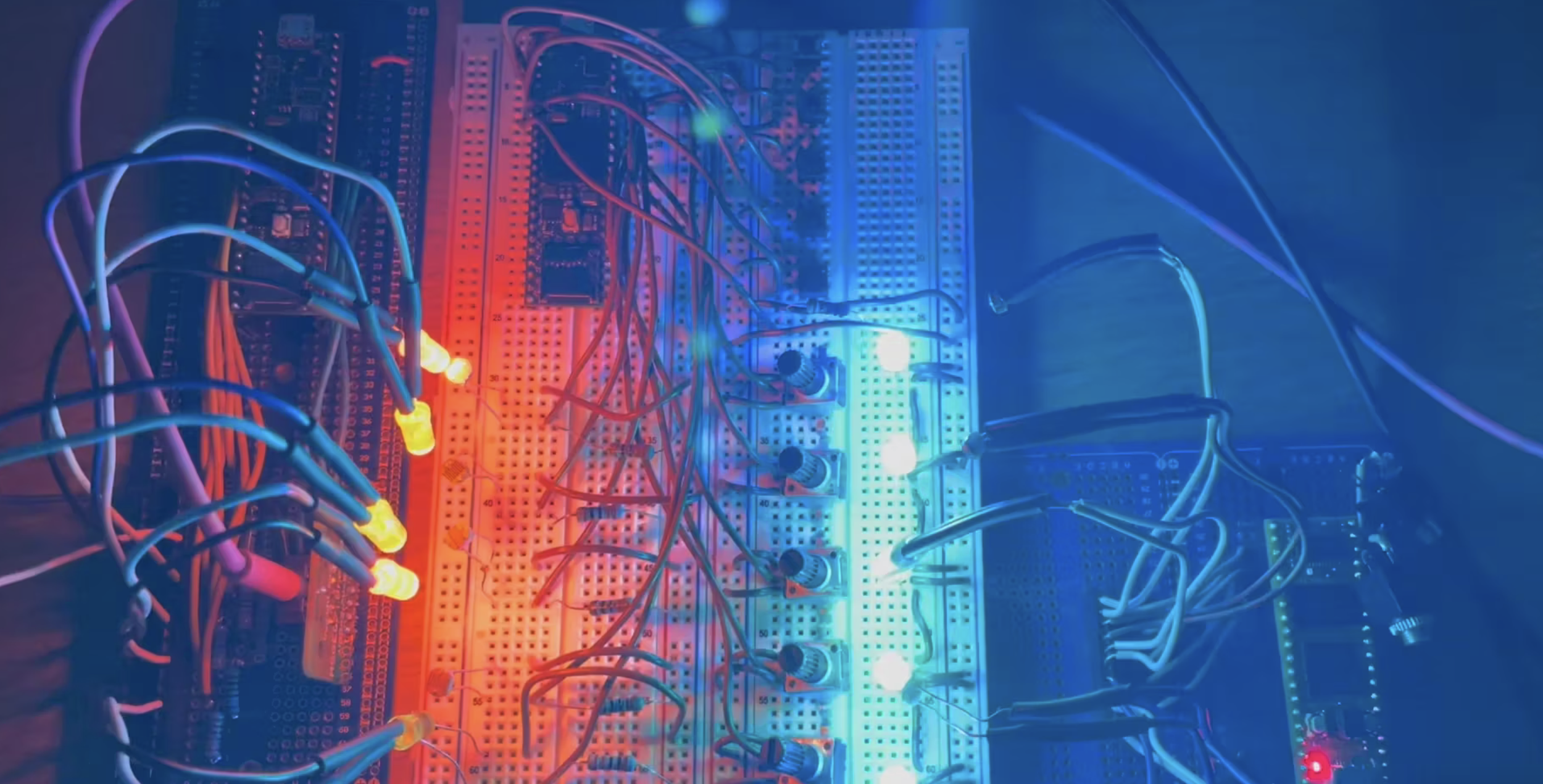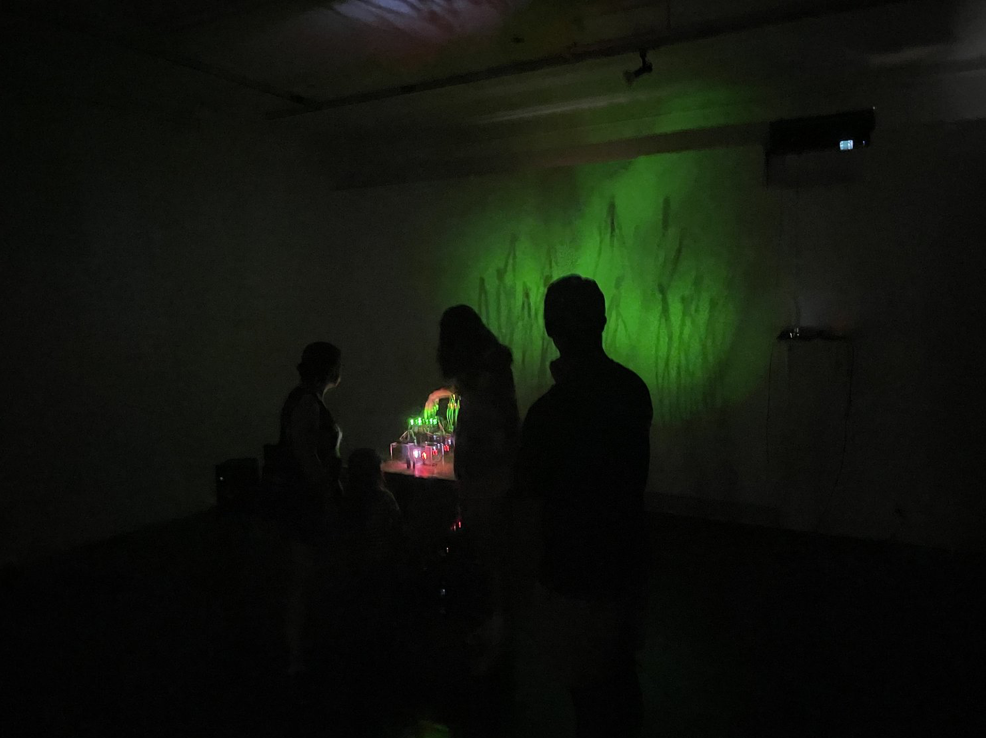Portfolio / Teaching
Black Box (2024)
Black Box is an iterative project featuring custom designed modular synthesizer systems that play video games. The game component responds dynamically to the instrument’s audio output, creating a self-regulating and responsive network. The sonic character of the synthesizer collapses biological and digital expression, confusing body, voice, and media, while the game’s 2D aesthetics and side-scrolling mechanics emphasize routine, monotony, and interchangeability in cybernetic relationships and technologically mediated labor practices.
Black Box was most recently exhibited at Ars Electronica in Linz, Austria September 4-8, 2024
Video of May 2024 iteration of Black Box software.
Musique de Supermarché I (2025)
Generative musical instrument created with soft synths and Unity. Play in browser (not mobile-friendly).
Substation System (2024)
This collection of hand built electronic instruments was featured in the Substation Sound Show on 3 August 2024 in Richmond, VA. Substation System is a creative response to the Carver Neighborhood Substation, where the exhibition and performances took place. As a dilapidated power station, the structure in fact has no power. Substation System is powered entirely by rechargeable batteries. The assemblage can function as both an installation and an instrument for live performance. Instruments designed in collaboration with Chrystine Rayburn include: Doubles dual oscillators with looping shift register; Jeanine pitch follower/VCO/LFO; Goblin glisson granular synthesizer; Nordique light sequencer.
Audience Interaction
sixty-seven (2023)
sixty-seven is a light synthesizer-sculpture developed in collaboration with Chrystine Rayburn during a residency at The Anderson in Richmond, Virginia. An air conditioner activates a feedback loop consisting of light organs, oscillators, sequencers, and auto-panners. The instruments are designed so their insides are projected against the wall and ceiling, creating a shadowplay that responds dynamically to the sounds occurring in the space. Visitors can manipulate the light density controlling the audio, lights, and resulting shadow play using their bodies, phones, and other handheld electronic devices.
Telematic Limit (2023)
Generative noise music via chaotic game physics.
Galway (2023)
A light-controlled chaos synthesizer.
Trash Fire (2023)
A game/indefinite dilemma inspired by failing infrastructure.
Teaching and Workshops
Electronic Instrument Building
This beginner-friendly course and workshop introduces students to electronic instrument construction. The goal is to create experimental electronic music and sound art using tools built from scratch. Patrick has presented the The DIY Electronic Instrument Building Workshop as a visiting artist for graduate students in the Art and Technology / Sound Practices Department at the School of the Art Institute of Chicago (Spring 2025) and for undergraduates in Virginia Commonwealth University’s Kinetic Imaging Department (Fall 2024 and Spring 2025).
Participants learn to build contact microphones, oscillators, and other synthesizer devices using affordable components. After learning how to use breadboards to prototype circuits, participants learn how to solder, enabling them to create durable circuits they can use in performance or integrate into installation art and sculpture. The workshop/course also introduces more complex circuit designs including sequencers, pitch followers, and envelope generators, as well as concepts including resonating bodies (using transducers to turn found objects into speakers), hacking old FM radios and kids toys found in thrift stores, and creating DIY effects such as slinky reverb.
Instrument Building Workshop - VCU Kinetic Imaging (Fall 2024 and Spring 2025).
Light-controlled wavetable synthesizer
The Galway: a light feedback synthesizer
Sequencer + VCO + Slinky Reverb
Ludic Sound Lab / 2D Game Development
This beginner-friendly course/workshop introduces participants to Unity 2D. The goal is for participants to create their very own 2D video game by the end of the course. We walk through the basics of creating popular 2D game forms, including platformers and top-down roguelikes. Step-by-step lecture demonstrations guide participants on how to implement basic code, how to organize game physics using Unity’s built-in tools, and how to create compelling sound design using the industry standard third party software FMOD.
Other topics include: the concept of the magic circle and the social and historical significance of games, a history of video games from the 1950s through the 1990s, and generative musical instrument building using 2D game physics.
A sound-focused version of this workshop was presented by the Chicago-based arts nonprofits Center for Concrete and Abstract Machines (CCAM) and the VGA Gallery in February, 2025.
Templates for the Ludic Sound Lab
Other Classes
Patrick has taught subjects including:
MAX/MSP
Video Game Development
Gen~
Hardware Development
Sound Art History
Audio Production Techniques
Programming for Synthesis
Composing for Dance
Performance Networks


























